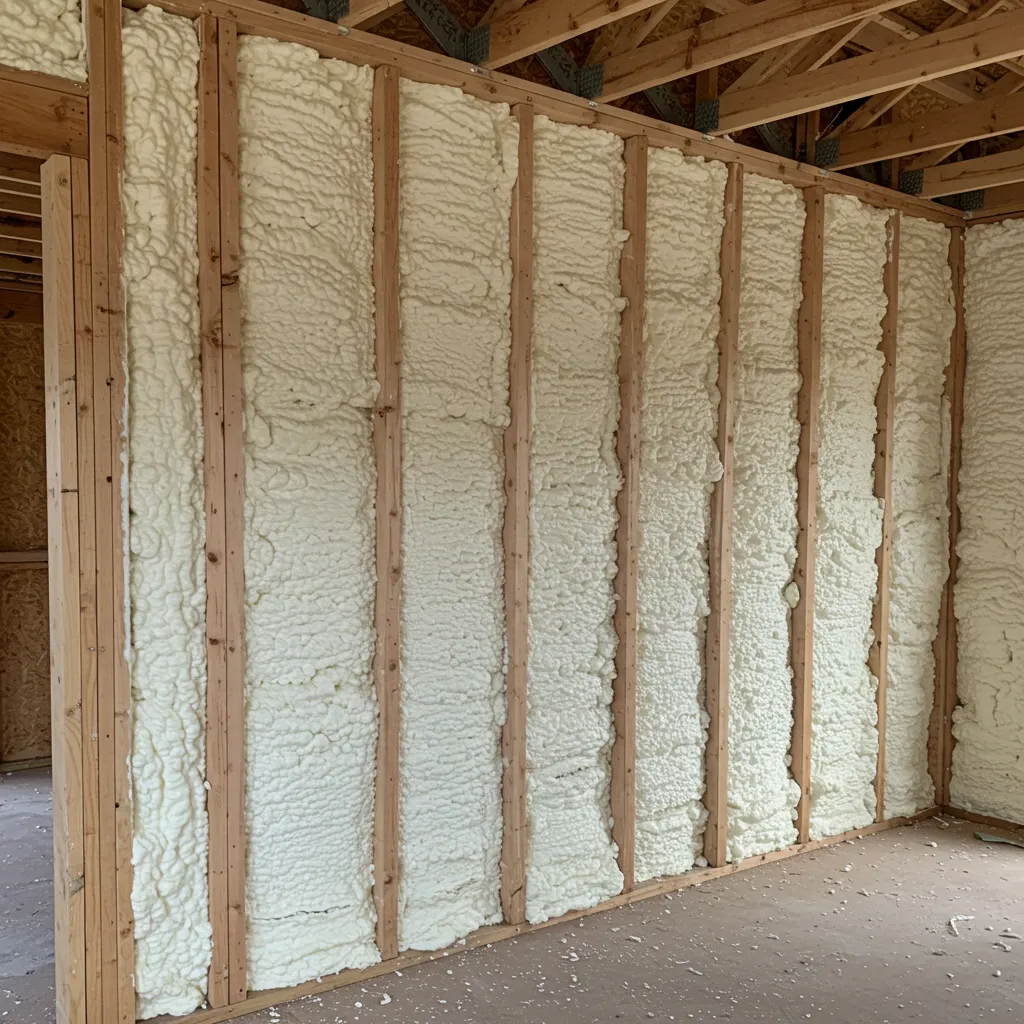Spray foam insulation is widely recognized for its superior insulating properties, energy efficiency, and air-sealing capabilities. However, despite its many advantages, there are certain situations and locations where it may not be the best choice. Understanding where not to use spray foam insulation can prevent costly mistakes, structural damage, or safety concerns.
This guide explores the limitations of spray foam insulation, the risks associated with incorrect applications, and alternative insulation solutions for specific environments.
Areas Where Spray Foam Insulation Should Not Be Used
1. Unvented or Poorly Ventilated Attics
Spray foam can create an airtight seal, which is beneficial for energy efficiency but problematic in poorly ventilated attics. Moisture accumulation can lead to mold growth and wood rot, jeopardizing the integrity of the structure.
Risks:
- Traps humidity, causing mold and mildew
- Prevents proper air circulation
- Can create overheating issues in the summer months
Alternative Solutions:
- Consider breathable insulation materials like fiberglass or cellulose
- Improve attic ventilation with ridge and soffit vents
2. Basements with High Moisture Levels
Basements are prone to moisture issues, and applying spray foam to damp surfaces can lead to adhesion failure and trapped moisture, which may cause mold growth and structural damage.
Risks:
- Traps existing moisture, leading to wood decay
- Can delaminate from damp surfaces
- Increases risk of mold formation
Alternative Solutions:
- Use rigid foam board insulation combined with a vapor barrier
- Apply waterproof coatings to basement walls before insulating
3. Crawl Spaces Without Proper Vapor Barriers
While spray foam is often used in crawl spaces, it should not be applied directly over unsealed dirt floors or without proper moisture barriers in place.
Risks:
- Allows moisture to accumulate underneath
- This can lead to mold and fungal growth
- This may cause wooden joists to rot over time
Alternative Solutions:
- Install vapor barriers before applying insulation
- Use closed-cell spray foam to minimize moisture intrusion
4. Areas with Electrical Wiring and Boxes
Expanding spray foam can interfere with electrical wiring and junction boxes, potentially causing safety hazards.
Risks:
- Can encase wires, making future repairs difficult
- May overheat electrical components if not properly ventilated
- Can void manufacturer warranties on electrical components
Alternative Solutions:
- Use batt insulation around the wiring to avoid encapsulation
- Keep spray foam at least a few inches away from junction boxes
5. Spaces with Frequent Structural Movement
Buildings or structures that experience frequent expansion and contraction, such as metal buildings or mobile homes, may not be ideal for spray foam application.
Risks:
- Foam may crack or separate over time
- This can lead to insulation gaps, reducing the effectiveness
Alternative Solutions:
- Use flexible insulation materials like fiberglass or mineral wool
- Apply caulking or sealants for additional air-sealing
6. Historical or Antique Buildings
Applying spray foam to historical buildings can lead to irreversible damage and negatively affect their long-term preservation.
Risks:
- Can damage original building materials
- Prevents proper moisture exchange
- May not be approved for use in historical preservation projects
Alternative Solutions:
- Use breathable insulation like mineral wool
- Install vapor-permeable barriers to allow for proper moisture transfer
7. Ceilings and Roof Decks Without Proper Assessment
Improperly applied spray foam on ceilings and roof decks can trap moisture, leading to wood rot and reduced roof lifespan.
Risks:
- This can lead to trapped condensation
- Reduces the ability to detect roof leaks
- This may create ventilation issues in some roofing systems
Alternative Solutions:
- Use vented roof designs where appropriate
- Consider rigid foam board insulation for better control
Common Mistakes to Avoid When Using Spray Foam Insulation
Even in suitable locations, improper application of spray foam can lead to various issues. Here are some common mistakes to avoid:
- Over-application: Excessive foam can exert pressure on structures and cause deformation.
- Ignoring moisture levels: Applying spray foam to damp surfaces can lead to adhesion failure.
- Blocking ventilation: Preventing airflow can create moisture buildup and mold growth.
- Incorrect mixing: Poorly mixed foam may not cure properly, reducing insulation effectiveness.
Alternative Insulation Options for Problematic Areas
For locations where spray foam is not advisable, consider the following insulation options:
| Insulation Type | Best Use Case | Advantages |
| Fiberglass Batts | Walls, ceilings, floors | Affordable, easy-to-install |
| Rigid Foam Board | Basements, exterior walls | Moisture-resistant, high R-value |
| Mineral Wool | Fire-resistant areas, attics | Non-combustible, soundproofing properties |
| Cellulose | Walls, attics | Eco-friendly, good thermal performance |
Conclusion
Spray foam insulation is an excellent solution for many applications, but it is not suitable for every situation. Proper assessment and consideration of factors such as moisture levels, ventilation, and structural movement are crucial before choosing spray foam insulation. Understanding where not to use spray foam can help homeowners and contractors make informed decisions to ensure long-lasting and effective insulation solutions.
Contact Us
For expert guidance on choosing the right insulation solution for your property, Contact Excel Spray Foam Plano today. Our team of professionals in Plano, TX can assess your specific needs and recommend the best insulation strategy for optimal energy efficiency and home comfort.
Frequently Asked Questions
Can spray foam insulation cause health issues?
If not properly applied or cured, spray foam can release volatile organic compounds (VOCs), leading to respiratory irritation. Always use protective equipment and allow proper curing time.
Is spray foam insulation removable?
Removing spray foam insulation can be challenging. It often requires mechanical removal, which can damage the underlying surfaces.
What happens if spray foam is applied to wet surfaces?
Applying spray foam on wet surfaces can prevent proper adhesion and lead to mold growth due to trapped moisture.
Can spray foam insulation be used in mobile homes?
It is not recommended for mobile homes due to structural movement, which can cause the foam to crack over time.
How does spray foam affect existing electrical wiring?
Encapsulating electrical wiring in spray foam can cause overheating issues and make future repairs difficult.
What are the best alternatives to spray foam insulation?
Depending on the location, fiberglass batts, rigid foam boards, and mineral wool are excellent alternatives.
Does spray foam insulation attract pests?
No, spray foam itself does not attract pests, but improper application can create gaps where pests may nest.



